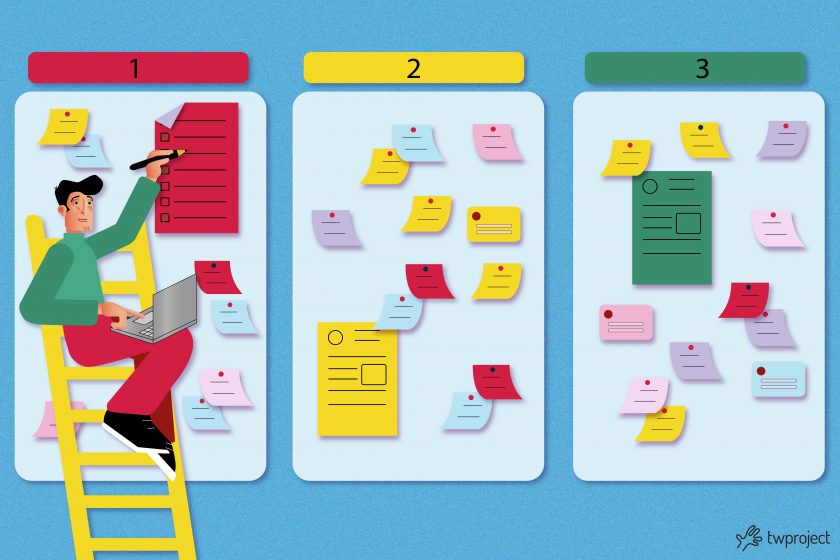In our hectic routine, we often find ourselves overwhelmed with tasks and deadlines, feeling we lack time for everything.
A problem that we often experience is poor prioritization.
Having many things to do does not mean being productive.
Therefore, knowing how to prioritize effectively and focusing on what is really important and urgent is critical.
CONTENT
People prioritize urgent tasks over any other activity, whatever the long-term benefits.
By learning to differentiate between urgent and important tasks, you can focus more time and energy on the things that matter most.
The Eisenhower Matrix helps to do just that.
In this article we will take a look at the Eisenhower Matrix, a straightforward and practical way to organize our activities and better manage our time.
What is the Eisenhower matrix?
The Eisenhower Matrix, also known as the Priority Matrix or the Eisenhower Method, is a tool that assists in sorting tasks by urgency and importance so that you can prioritize work that matters.
Dwight D. Eisenhower, the 34th president of the United States, introduced the first idea that would later lead to the Eisenhower Matrix.
In a 1954 speech, Eisenhower stated: “I have two kinds of problems: the urgent and the important. The urgent are not important, and the important are never urgent.”
Drawing inspiration from President Eisenhower’s words, Stephen Covey developed what has become a popular tool for managing priorities: the Eisenhower matrix, also known as the time management matrix.
The Eisenhower matrix can help when:
- You spend your day solving issues that arise every day instead of focusing on activities that make sense to complete to achieve a particular goal.
- You are always busy, but you feel that your work has little impact.
- You aren’t making progress on long-term goals.
- You experience procrastination.
- You are struggling to delegate tasks.
The four quadrants of the Eisenhower matrix

The Eisenhower matrix features four quadrants that rank each activity and assign an action to be taken.
Let’s see what they are in detail:
Quadrant 1: urgent and important tasks – to be undertaken immediately
The first quadrant covers all urgent tasks that require immediate care. These tasks must be accomplished as soon as possible; otherwise, there may be negative consequences. They cannot be delegated.
Examples of urgent and vital tasks may include emergencies, impending deadlines, or problems that require immediate solutions.
Quadrant 2: non-urgent but essential tasks – to be done later
Activities in the second quadrant are not urgent, although they are essential for achieving long-term goals.
Planning your time for these activities increases the likelihood of achieving them. Planning also lessens the chances of running into distractions or forgetting them altogether. If these tasks are ignored, they will end up moving to quadrant 1.
Some examples include strategic planning, staff and professional training, and networking.
Quadrant 3: urgent but unimportant tasks – to be delegated immediately
Activities in quadrant 3 require immediate care but may not contribute to long-term goals.
Spending time on quadrant 3 activities will only divert time and energy at the expense of what matters. Since these tasks are still urgent, nonetheless, the answer is to delegate them immediately.
Examples may include disruptions, non-important phone calls, or non-essential meetings.
Quadrant 4: non-urgent and unimportant tasks – not to be done at all
Tasks that do not contribute to goals and do not require immediate action belong to quadrant 4, the waste quadrant.
These tasks often divert your concentration from what is important. Your best bet is to avoid these tasks or, even better, eliminate them from your to-do list.
Examples of these activities include social media, online games, or watching low-value television programs.
These four quadrants are key to differentiating between urgency and importance, allowing you to manage your time better and increase productivity by focusing on what really matters.
Difference between urgent and important tasks
The basic principle underlying the Eisenhower matrix is the differentiation between important and urgent tasks.
An urgent task requires immediate attention.
These tasks may be reactive, such as answering a phone call to fix a problem for a customer, or they may be needed to achieve a goal, such as finishing a document to meet a deadline.
Furthermore, urgent tasks have negative consequences if they are not addressed immediately. Failing to call the customer could result in negative reviews for your store, and failing to finish your document before the deadline could result in losing funding.
On the other hand, an important task aligns with personal values and contributes to completing the goal. Although this type of task does not call for immediate action, devoting time will allow progress toward important goals.
For example, creating an online portfolio can help a freelancer land a new job.
Furthermore, postponing important activities for a relatively long time may cause them to become urgent tasks that can no longer be ignored.
Examples of urgent and important tasks
To better understand the difference between these types of activities, we will consider some specific examples:
- Urgent and important tasks: Solving a technical problem that halts production at a factory, attending an emergency meeting with a key customer, and filling out a critical report for an upcoming deadline.
- Urgent but unimportant tasks: Replying to emails that require an immediate but non-critical response, handling interruptions or non-critical phone calls, and attending routine meetings that do not provide significant value to the project.
- Non-urgent but important tasks: Planning a long-term strategy for company growth, developing skills through continuous training, fostering professional relationships, and networking.
- Non-urgent and unimportant tasks: Watching funny videos online during working hours, browsing social media without a specific purpose, and attending social events irrelevant to your work.
Using Twproject for developing your Eisenhower matrix
Making an orderly to-do list is the most challenging part of the Eisenhower matrix, although, with automation, it is no longer necessary to perform this task manually.
Using project management software such as Twproject, you can determine which tasks have the highest priority.
With this tool, you can categorize and color-code your different tasks.
Twproject is not a static document like an Eisenhower matrix. It allows you to always have a comprehensive snapshot of the tasks in real time and thus properly organize and prioritize them.
Correctly prioritizing tasks is just the beginning. Twproject allows you to monitor your team’s progress and work, ensuring the project’s success.
Information and data are automatically acquired and displayed in customizable, easy-to-read charts and graphs for a high-level overview.




